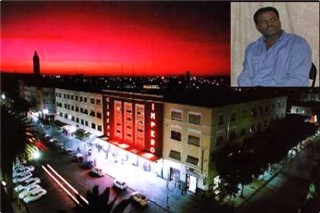Workshops and Training
Attended a workshop on Teaching Methods and Student Learning, which was organised by Larenstein International Agricultural College (Netherlands) and University of Asmara, held on Jan 26-30, 1998, in Asmara-Eritrea.Attended a workshop on Eritrean Business Management Programme, which was organised by University of Asmara and GOREE Institute (Senegal) held on Oct. 16, 1997, in Asmara- Eritrea. Participated in the UNC-CH K-12 Outreach Program, which was prepared by University of North Carolina at Chapel-Hill: Centre for International Studies (USA) held on May 1-5, 1997.
Became a member of American Society for Public Administration (ASPA) in 1996.
Attended ASPA Annual Conference held in Atlanta-Gorgia(USA), from June 29-July 3, 1996.
Participated in Training of Trainers program in Human Resource Management, which was designed and taught by the Eritrean Institute of Management from July 15-24,1995.
Attended International Workshop on Management of Development: National Capacity strengthening. It was held in the International Training Centre of the ILO (UN-International Labour Organisation), Turin-Italy, from 27 Feb. to 24 March, 1995. Principal subjects studied were adaptation and training skills, Capacity building premises and practice, Project formulation, and Budgeting review and control for projects.
|
Work Experience
Lecturer at the University of Asmara in the
Department of Public Administration since
August 18,1997.Head of the Department of Public Administrationsince June 6, 1998. Expert in Management Training and Organisational Development at the Eritrean Ministry of Defencefrom 1993 - 1994. Planning and Research Expert at the Ethiopian Ministry of Finance from August 1992 to Oct.1993. Participated in many training programs preparedby the University of Asmara and the EritreanInstitute of Management.
Prepared training manuals for the Eritrean
Institute of Management.
|
Asmara-Eritrea
Asmara is the capital city of Eritrea.It was built in 1920's. Asmara was made the capital city in preference to Massawa by Governor Martini in 1897. It is by far the largest city in Eritrea, with a population of more than 600,000. Under thirty years of Ethiopian occupation, the city was allowed to deteriorate, but it still retains its essential beauty.Since liberation in 1991 the city has been undergoing a rapid improvement in infrastructure maintenance and repainting. Asmara is the safest African capital for travelers.Moreover it is one of the cleanest cities in Africa. The streets are elegantly lined with palms trees and a string of boutiques, coffee-shops and restaurants, which are reminiscent of southern Italy.
Brief Introduction to Eritrea
Eritrea is located on West Coast of the Red Sea in northeast Africa; with a land surface area of 125,700 sq. km. Eritrea is bounded in the northwest by Sudan, in the south by Ethiopia, and in the southeast by Djibouti. Its longest border is the east in the Red Sea. |

Liberation Avenue-Asmara
The country has a coastline of more than 1,000 kilometers (635 miles) and its territory includes more than 350 islands.Eritrea's proximity to the Red Sea together with its physical features account for its varied climate and rainfall. The highlands have a cool temperature climate while the lowlands are characterized by a hot and humid climate, especially along the coast. Eritrea is in the Saharan rainfall zone and receives its heaviest rains from the southwest monsoons. Eritrea was liberated in May 1991 by EPLF after 30 years of war with Ethiopian illegal occupation. In April 1993, the Provisional Government of Eritrea conducted an internationally supervised referendum in which 98.5 percent of the population participated; 99.8 percent voted for independence. Eritrea became officially independent in 24 May 1993.
K.G.Habtom@uvt.nl
|


